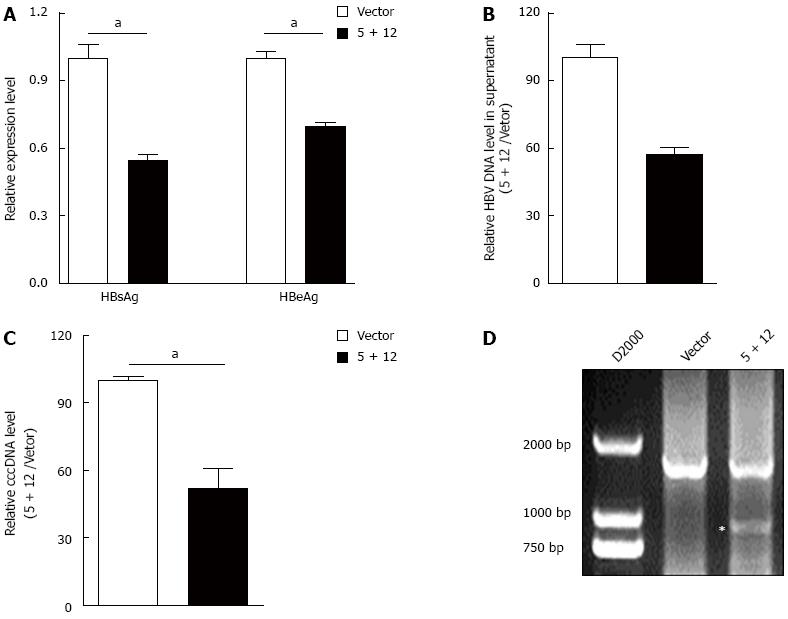Copyright
©The Author(s) 2015.
World J Gastroenterol. Aug 28, 2015; 21(32): 9554-9565
Published online Aug 28, 2015. doi: 10.3748/wjg.v21.i32.9554
Published online Aug 28, 2015. doi: 10.3748/wjg.v21.i32.9554
Figure 5 Hepatitis B virus-specific gRNA could suppress the genotype D hepatitis B virus replication and destroy cccDNA.
A: HepAD38 cells were seeded into a 6 well plate. Then, gRNA-5 and -12 expression vectors (each 2 μg) were co-transfected into HepAD38 cells. HBsAg and HBeAg levels in the culture supernatant of HepAD38 cells were measured at 72 h post transfection using a time-resolved fluoroimmunoassay; B: HBV DNA levels in the culture supernatant of HepAD38 cells were measured at 72 h post transfection using real-time quantitative PCR; C: HBV cccDNA levels in HepAD38 cells were measured using KCl precipitation, plasmid-safe ATP-dependent DNase (PSAD) digestion, rolling circle amplification and quantitative PCR combined method; D: PCR amplification was performed using the primers beyond the cleavage sites of dual gRNAs following KCl precipitation, PSAD digestion and rolling circle amplification. HBV: Hepatitis B virus; HBsAg: Hepatitis B virus surface antigen. The asterisk means the digested fragment of cccDNA.
- Citation: Wang J, Xu ZW, Liu S, Zhang RY, Ding SL, Xie XM, Long L, Chen XM, Zhuang H, Lu FM. Dual gRNAs guided CRISPR/Cas9 system inhibits hepatitis B virus replication. World J Gastroenterol 2015; 21(32): 9554-9565
- URL: https://www.wjgnet.com/1007-9327/full/v21/i32/9554.htm
- DOI: https://dx.doi.org/10.3748/wjg.v21.i32.9554









